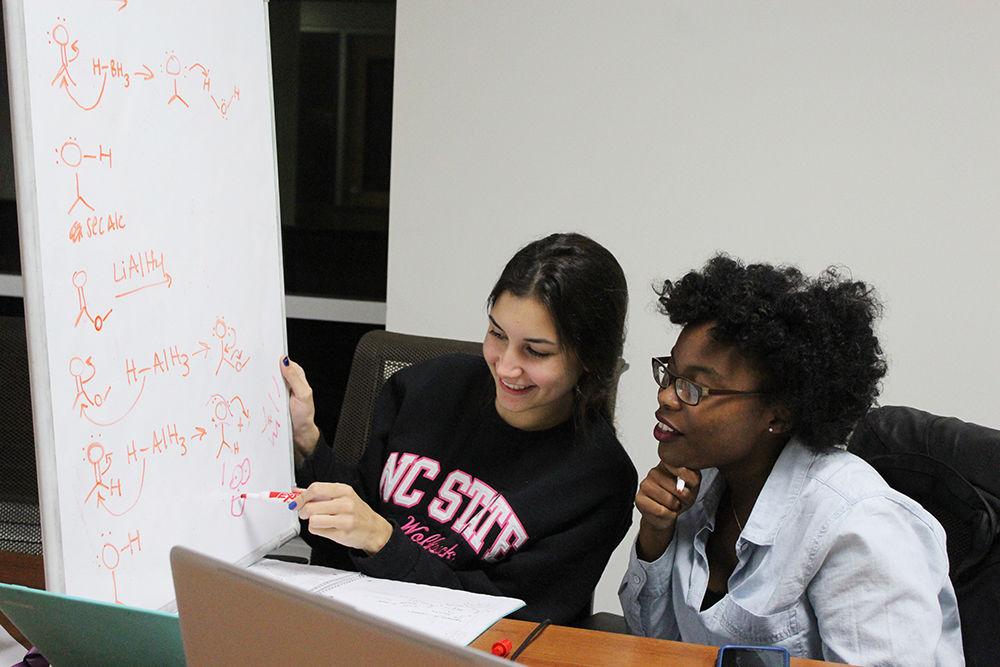
Will Skinner
Shaunaci Stevens, a sophomore studying in biological science tutors Melisa Pasli, a sophomore studying polymer and color chemistry during a WISE tutoring session on Tuesday in Lee Hall. The tutoring program is designed to help women in science and engineering majors as part of the WISE Village.
After researching science, technology, engineering and mathematics (STEM) fields, an NC State professor has made discoveries on the retention and job status of women and underrepresented minorities in engineering.
Marcia Gumpertz, an NC State statistics professor, was the lead author in research studying the makeup of women and underrepresented minorities in university faculty, specifically in STEM fields.
The research was conducted in large, STEM-based land-grant schools between 2002-2015. In conclusion, Gumpertz found that women in the engineering discipline were more likely to leave when they started as assistant professors and also left without tenure more frequently than men.
“I think it’s really important topic, and there’s a lot of concern about whether women and underrepresented minority faculty are leaving the university more frequently or sooner than other faculty,” Gumpertz said while discussing why she chose to research the topic.
Gumpertz discussed how the demographics of a university’s faculty is what many believe compels a student to stay in a certain area of study.
“I was the vice provost for faculty diversity,” Gumpertz said. “As part of that role I think it’s very important for the university to keep track of what the faculty experience is, the demographics of faculty status that of the climate for faculty. So this is all part of that effort.”
Gumpertz said that recruitment of a diverse faculty is only the beginning; retention of the faculty is also important. Even with a small number of underrepresented minorities in university faculty, results demonstrated that minority faculty in engineering left more than other faculty before their tenth year.
“Well, I was really interested in retention of faculty because if you think this is important that we have a more diverse faculty, there’s several elements of that,” Gumpertz said. “One of the big ones that people think about is recruiting faculty. But another really big one is retention. Once they are here, do they stay?”
The study found that the number of women in STEM fields has risen from 1992 to 2015, but for underrepresented minority groups, the number of Hispanic faculty has risen substantially while the number of African-American and American Indian has risen slowly.
Katherine Titus-Becker, head of the Women in Science and Engineering (WISE) village at NC State, talked about how the village tackles urging students to stay in STEM fields.
“There are lots of companies that value and need more women in STEM,” Titus-Becker said. “They need to find their place and find an employer that values them and certainly not to judge the STEM field based on one company that has got a bad culture.”
While WISE is catered towards first- and second-year women who are interested in pursuing careers in science and math, the bigger goal is to lead students to find their passions, even if they are not in STEM.
WISE aims to increase retention and graduation rates of women in science and engineering fields at NC State. While students are required to apply and be accepted into the WISE program, all students are welcome to attend tutoring session held Sundays, Tuesdays and Thursdays.